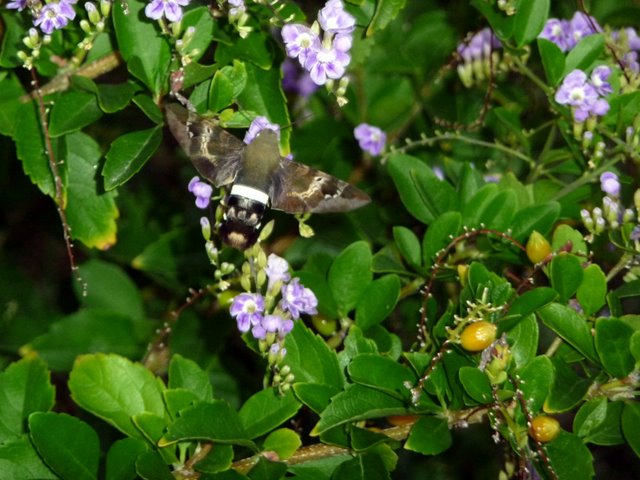Aellopos titan, Titan sphinx, White banded day
sphinx
Aellopos titan
ay-LOH-puhsmmTYE-tuhn
(Cramer, 1777) Sphinx
The Titan Sphinx or White-banded Day Sphinx

Aellopos titan Port O'Connnor, Calhoun County,
Texas,
August 8, 2008, courtesy of Brush Freeman.
This site has been created by
Bill Oehlke at oehlkew@islandtelecom.com
Comments, suggestions and/or additional information are welcomed by Bill.
TAXONOMY:
Family: Sphingidae, Latreille, 1802
Subfamily: Macroglossinae, Harris, 1839
Tribe: Dilophonotini, Burmeister, 1878
Genus: Aellopos Hubner, [1819] ...........
Species: titan Cramer, 1777
|
MIDI MUSIC
.....It's a Wonderful World.....
copyright C. Odenkirk
ON.OFF
<bgsound src="world.mid" LOOP=FOREVER>
|
Aellopos titan is a neotropical species, common in Mexico, with a tendency to stray. It is sometimes encountered in southern Texas where there are breeding populations.
It strays far to the north and has been reported in southern Ontario and southern Quebec, Canada.
A. titan has a well defined black dot at the end of the discal cell of the forewing that is lacking in the smaller, similar A. fadus. The Hawk Moths of North America,
James P. Tuttle, 2007.
The amount of white in the forewing inner band varies. In the Brush Freeman image above there is much white in the inner band, clearly running from the
costa to the inner margin. This band is divided by a thin, dark, irregular line running the length below the cell dot. In some specimens there is little white,
but the cell dot is always present.
In Aellopos tantalus there is a single faint inner band, and one or two small white dots in the postmedial area. A. titan has three or more usually four
prominent white markings in the postmedial area. A. tantalus is sometimes encountered in Florida, and rarely strays northward. It is not expected in Texas.
Aellopos clavipes occurs in extreme southern Texas. It can be confused with A. titan, but clavipes always has three postmedial white markings while titan has three or
more usually four such markings. In fresh clavipes specimens, the inner band tends to be pinkish, fading to brown. In fresh titan specimens the band is destinctly white and
remains so over time. Both species have the dark spot in the cell.
Use your browser "Back" button to return to the previous page.
